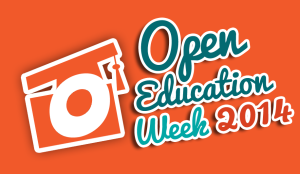(27th in my logic of competence series.)
So here I am … continuing the thread of the logic of competence, nearly 7 years on. I’m delighted to see renewed interest from several quarters in the field of competence frameworks. There’s work being done by the LRMI; and much potential interest from those interested in various kinds of soft skills. And some kinds of “badges” – open credentials intended to be displayed and easily recognised – often rely on competence definitions for their award criteria.
I just have to say to everyone who explores this area, beware! There are two different kinds of things that are both called similar things: “competencies”; “competences”; “competence definitions”; skills; etc.
- There is one kind of statements of ability that people measure up to or not. My favourite simple understandable examples are things like “can juggle 5 balls for a minute without dropping any” or “can type at 120 words per minute from dictation making fewer than 10 mistakes”. But there are many less exact examples of similar things, that clearly either do or do not apply to individuals at a given time of testing. “Knows how to solve quadratic equations using the formula” or “can apply Pythagoras’ theorem to find the length of the third side of a right-angled triangle” might be two from mathematics. Many more from the vocational world, but they would mean less to those not in that profession or occupation.
- Then there is another kind, more of a statement indicating an ability or area of competence in which someone can be more or less proficient. Taking the examples above, these might be: “can juggle” or “juggling skills”; “can type” or “typing ability”; “knows about mathematics” or “mathematical ability”. There are vast numbers of these, because they are easier to construct than the other kind. “Can manage a small business”; “good communicator”; “can speak French”; “good at knitting”; “a good diplomat”; “programming”; “chess”; you think of your own.
What you can see quite plainly, on looking, is that with the first kind of statement, it is possible to say whether or not someone comes up to that standard; while with the second kind of phrase, either there is no standard defined, or the standard is too vague to judge whether or not someone “has” that ability or not — it’s more like, how much of that ability do you have?
In the past, I’ve called the first kind form of words a “binary” competence definition, and the second kind “rankable”. (Just search for “binary rankable” and you’ll get plenty.) But these are so unmemorable that I even forgot myself what I had called them. I’m looking for better names, that people (including myself) can easily remember.
Woe betide anyone who mixes the two kinds without realising what they are doing! Woe betide also anyone who uses one kind only, and imagines that the other kind either don’t exist or don’t matter.
The world is full of lists of skills which people should have some of. “Communication skills”. “Empathy”. “Resilience”. Loads of them. And in most cases, these are just of the second kind. They have not defined any particular level of the skill, and expect people to produce evidence about how good they are at the given skill, when asked.
In the vocational world of occupations and professions, however, we see very many well-defined statements that are of the first kind. This is to be expected, because to give someone a professional qualification requires that they are assessed as possessing skills to a certain, sufficient level.
The two kinds of statements are intimately related. Take any statement of the first kind. What would be better, or not so good? Juggling 3 balls for 30 seconds? Typing a 60 words per minute? These belong, as points on scales, respectively, of juggling skills and typing ability. Thus, every statement of the first kind has at least one scale that it is a point on. Conversely, every scale description, of the second kind, can, with sufficient insight, be detailed with positions on that scale, which will be statements of the first kind.
In the InLOC information model, these reciprocal relationships are given identifiers hasDefinedLevel and isDefinedLevelOf. These is perhaps the most essential and vital pair of relationships in InLOC.
So what about competence frameworks? Well, a framework, whether explicitly or implicitly, is about relating these two kind of statements together. It is about defining areas of ability that are important, perhaps to an activity or a role; and then also defining levels of those abilities that people can be assessed at. It’s only when these levels are defined that one has criteria, not only for passing exams or recruiting employees, but also for awarding badges. And the interest in badges has held this space open for the seven years I’ve been writing about the logic of competence. Thank you, those working with badges!
Now I’ve explained this again, could you help me by saying which pair of terms would best describe for you the two kinds of statements, better than “binary” and “rankable”? I’d be most grateful.
